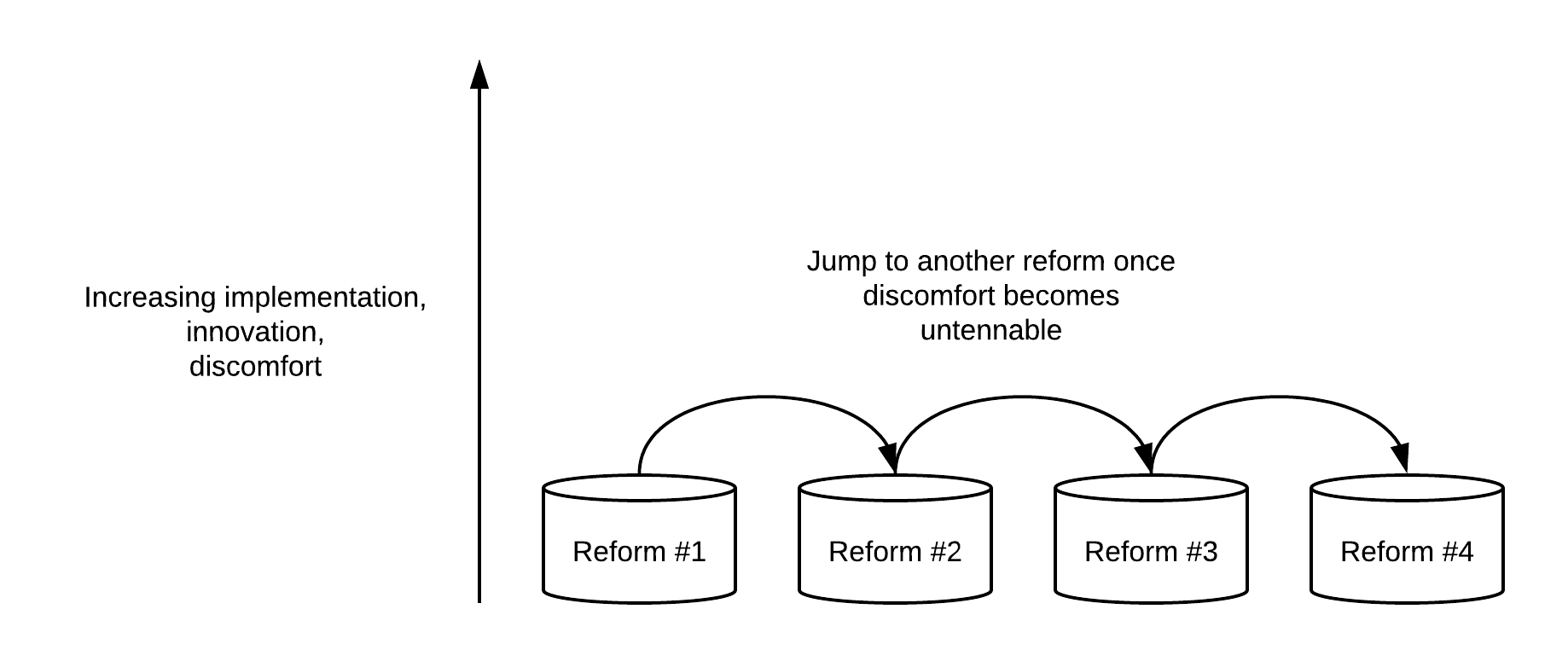Educational reform in the last several decades has been horizontal as schools commonly jump from one initiative to another with little reason. The typical cycle is familiar to many: First, an initiative (supported with little or dubious evidence from the learning sciences) is introduced and implemented (with little or dubious support and rationale). Second, problems with the initiative appear. These can originate from poor or incomplete implementation or support, discrepancies between the practices and human nature, or other difficulties. Third, the initiative is recognized as failing, but remains in place (or is replaced with previously used methods under the name of the initiative). Fourth, the next initiative begins. Following this model of reform, educators can appear to be working to improve curriculum and instruction while avoiding implementing any new practices. This also allows educators to abandon any initiatives that force them to resolve any challenges to their existing practice.

In describing how leaders can facilitate the adoption of ICT-rich methods, Barbara Cambridge (2008), a scholar working on ICT-rich language instruction, suggested educational institutions that are involved in redefining purposes and strategies for the 21st century must adopt socially dynamic and active planning and design activities similar to those that characterize active learner tasks. The systematic change necessary will also necessitate practices to encourage flexibility and innovation. In addition, Cambridge suggested building upon existing successes, so that (for example) existing efforts to establish flat classrooms in a particular school becomes the foundation for increasing and expanding authentic learning. Systematic change requires educators adopt the courage to change and possess both patience and impatience. Patience because all change takes time to become established, and impatience especially in the face of excuses.
Toru Iiyoshi and Cheryl Richardson (2008), both from the Knowledge Media Lab of the Carnegie Foundation for the Advancement of Teaching, noted that educational transformation, especially in the digital age, is characterized by “the impulse is to keep moving to newer and niftier ‘gadgets’ without learning thoroughly from what worked and what did not” (338). Reflection, it seems, is no longer among educators’ tools as related to their own planning. Iiyoshi and Richardson conclude, “In many cases, familiar educational tools and resources would be more effective if educators, in partnership with students, would simply try to devise ways of using them to deepen students’ understanding” (338). As educators adopt the planning that will support their understanding of familiar (and new) tools and resources, they will abandon the horizontal reform, and begin to reform vertically, in that change in capacity and culture and reform activity based on evidence and reason becomes systemic. Vertical reform is opposed to horizontal reform where initiatives are replaced before being fully implemented.
References
Cambridge, Barbara. 2008. “Scaffolding for Systematic Change.” In Opening Up Education: The Collective Advancement of Education through Open Technology, Open Content, and Open Knowledge, edited by Toru Iiyoshi and M.S. Vijay Kumar, 357-73. Cambridge, MA: The MIT Press.
Iiyoshi, Toru, and Cheryl R. Richardson. “Promoting Technology-enabled Knowledge Building and Sharing for Sustainable Open Educational Innovations.” In Opening Up Education: The Collective Advancement of Education through Open Technology, Open Content, and Open Knowledge, edited by Toru Iiyoshi and M.S. Vijay Kumar, 337-55. Cambridge, MA: The MIT Press.